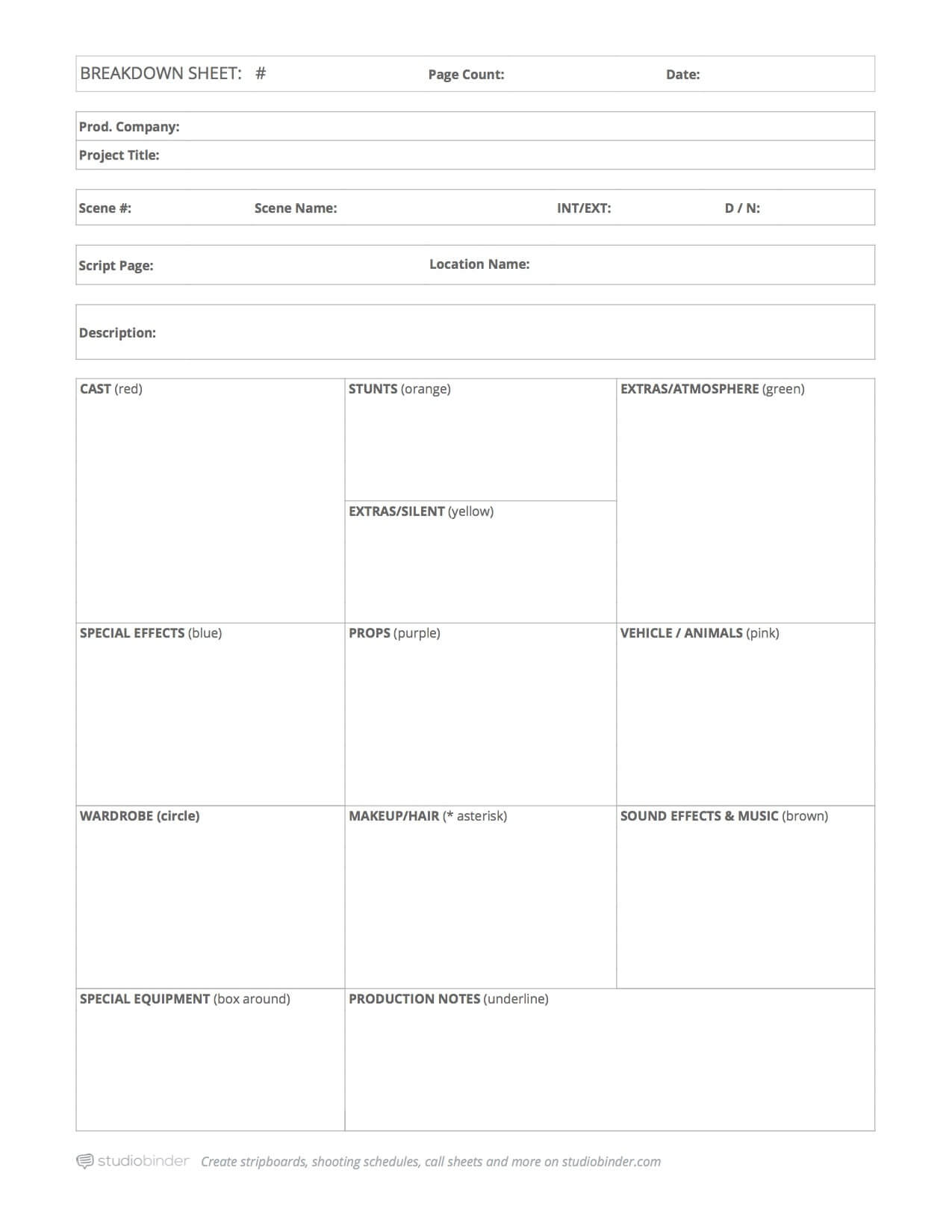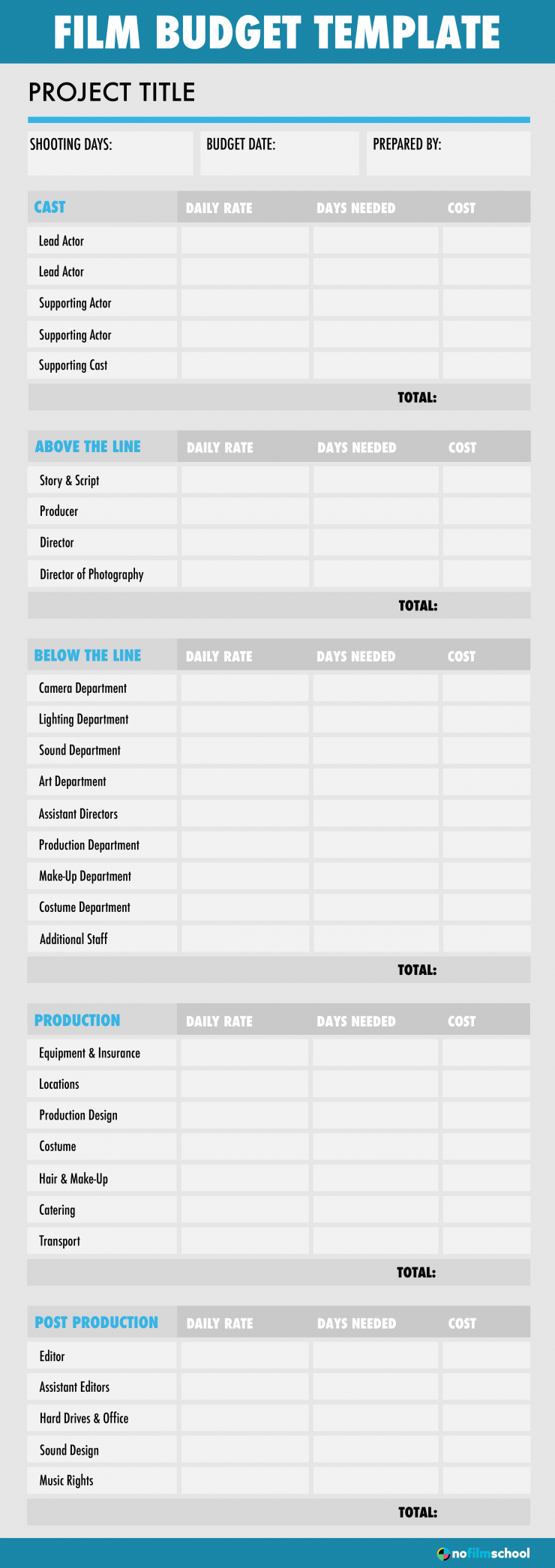Cover image via
Shot List Template – 19+ (Word, Excel, PDF) The best film production is an organized one. Imagine you have the most spectacular idea for your project, and you are itching to get it rolling. Take a step back and ask yourself: have I organized my shots as best as I could? Having a shot list is a resourceful, time-saving way to ensure a smooth. Script Breakdown Template. A script breakdown template is necessary for every kind of film. Take a look at our templates. Maybe they are exactly what you’ve been looking for.
- The Excel template includes two column charts that report total downtime minutes by shift and product. To setup cells to show total downtime by product Go to the Product worksheet and type in the cell next to the first product (Product A) the formula “=SUMIF(Log!C1:C1000,“Product A”,Log!G1:G1000),” which will add up all the downtime.
- Script Breakdown Template Excel. April 28, 2021 0. Action Item.list. March 21, 2021 0. December 2015 Calendar Template Excel. March 10, 2021 0. Financial Planner Example.
There are a few different ways to create a shot list, but what matters most is that you take the time to do it. Here’s one tested method to try next time you break a script down into a shot list.
Top image via Delta Film Academy
Filmmaking procedures will often change from production to production, studio to studio, and from region to region. There isn’t just one way to do something or one word to describe that particular function. Regarding shot lists, I’m sure you could find several different ways to create one.
In the book Script Supervising and Film Continuity, author Pat P. Miller, explains expertly explains the formal process. Yet even Miller says “You may design any format that serves your purpose, so long as the following information is properly recorded…”
Essentially, as long as your production crew is familiar with your format, you’re good to start shooting. First, you need to break down the shots on your script page.
In the example piece above, I’m going to breakdown and visualize the information into different shots. As seen below, you do this with a line which is closed off at the top and the bottom top to signifythe end of that shot.
When you do this in your script, it’s best to use a pencil — if you use a pen and change your mind halfway down the page, your script will get messy.
In the marked page above, I have four different lines, each representing a different shot. You may notice that some lines overlap one another, such as shot 2) and shot 2a). This conveys a few things:
- Shot 2) is longer than shot 2a).
- Because the length of 2a) is just a single line, all that’s to be filmed is the information ahead of the marking — turning the radio on.
- In the edit, we would like shot2a) to play out and then return back to shot2).
There is a common misconception that the first shot in a scene is called by the scene number and then the letter a. For example, 2a). This is incorrect.
The first shot of a brand new scene is just the scene number on its own — 2). Every proceeding change (lens change, camera position, frame rate change) after the initial shot is when you add a letter.
As a side tip: You can also put a wiggly line next to the character who is speaking but isn’t on camera. This is really more something a script supervisor would do for the editor, but if it’s going to help you distinguish who the camera is on when it comes to typing up your shot list, then use it to your advantage. You need to do this with your entire script. After all that is complete, start to implement this information into a more comprehensive and cleaner shot list.
It’s really up to you how involved you want your shot list to be. It’s going to depend on the size of your production and budget level. Below is a basic shot list that I’ve put together from all the information outlined above.
The primary purpose of the shot list is to help break down the scene into specific steps which will serve as a blueprint — and safety net — to your day of production. There are hundreds of shot list templates you can download for Microsoft Word and Excel. I find the shot list included in the video below (via Delta Film Academy) to be incredibly detailed and helpful.
It goes so far as including the length of the shot on the script page, and the predicted setup time for that shot. It’s ideal for efficiently planning shots. For further reading on the language of the script, I highly recommend the above-mentioned book Script Supervising and Film Continuity by Pat P. Miller. Although the primary purpose of the book is to study the craft of script supervising, it also breaks down a lot of other aspects such as the shooting schedule, how to break down a script, and so on.
Do you have any specific shot list templates you always use? Let us know in the comments.
The first step to making a great video is having a great shot list. It's a vital ingredient, no matter how small or large your crew or cast is. A shot list is a kind of to-do list that helps everyone stay on the same page.
We’ve created a free shot list template that you can use with Google Sheets or Microsoft Excel. This free download is perfect for any kind of film production – from short films to music videos, and everything in between.
Why are shot lists important?

It’s easy to get lost during a shoot, even with a small team. If you’ve got lots of settings, multiple actors, and a large crew, then things only get more complicated.
A shot list keeps a project on track. Before filming, it helps directors to collect their thoughts and build a shooting schedule. During filming, a solid camera shot list means different departments can work independently from each other. It also makes it easy to keep going if a crew member’s sick one day, or has to leave the shoot.
When to make a shot list
You should make your shot list after finishing your script, at the same time as creating your storyboard. Your shot list will help you visualise what you want. It'll make it easier to organise the cast, crew, equipment, and locations that bring your vision to life. (Side note: you'll need a few extra documents, like call sheets, tech specs, and license agreements – they all stem from the shot list.)
Script Breakdown Template Excel
Toggling between storyboard and shot list in Boords
During production, you’ll add notes to the shot list to help your editor – like which takes to use, detailed comments, and shot / card numbers. Remember to add the clip number or timecode to the shot list during production. It'll help your editor know which shot is which, and dramatically speed up the editing time.
Remember to organise your shots by location. Putting similar shots together makes shooting easier because you can shoot them all at the same time. (Note: this might not be in order of shot number. And that's okay!) This makes filming way more convenient – even if you're not shooting in the order of your storyboard.
Looking to make a short film? Check out our handy guide: How to make your first short film
What's in a shot list?
A typical shot list includes:
- Scene: This is the scene number, which you'll find on your script. You might not need it for smaller productions where everything happens in one scene.
- Setup: Add a new setup every time you reposition the camera or change the lighting. You can use these setups later to group similar setups together, making it simpler to shoot.
- Shot: Increase the shot number by one every time you start a new shot. (Depending on your personal preference, you might want to reset the shot number for every new setup.)
- Description: Use this column to quickly explain where you’re at in the script. You should say what the subject is – whether it's an actor, group of actors, prop, or a setting. Then describe any action that's happening, any props involved, and what exactly the camera should capture. This description tells your director everything that's happening in the shot, so that everyone's on the same page.
- Equipment: Use this column to list the equipment that's supporting the camera. For example,
Tripod,Steadicam,Drone,Dolly, etc. - Movement: Use this column to explain what your camera's doing when it's not static, i.e. it's moving. For example:
Static,Pan,Tilt,Dolly,Zoom, etc. - Angle: Use this column to describe the angle of the camera in relation to the subject. If your camera's lower than your subject, it’s a low angle. If it’s higher than the subject, it’s a high angle. You can also include other terms that help to explain the angle, for example:
Eye-level,High angle,Low angle, etc.
Check out our guide to camera moves and angles to learn more about camera fundamentals.
Script Breakdown Template Excel Template
- Shot size: Describe the size of your subject in the frame. Varying shot sizes and having them appear in different orders creates dramatically different effects. A scene might start with a wide shot to establish where it's happening, before moving to a mid-shot of your subject, then a close-up of the action. Shot sizes are often abbreviated, e.g.
wide shot (WS),very wide shot (VWS),mid-shot (MS),medium close-up (MCU),close-up (CU),extreme close-up (ECU). - Audio: Use this column to explain how you're picking up the audio. For example:
Boom,Lav(s),Voiceover (VO). - Lens: Use this column to record which size lens you're using. For example
24mm,50mm,200mm. - Time estimate: Use this column to estimate how long it will take to set up (not shoot) each shot, which helps you build your schedule and timings for each day. It'll also highlight any time-consuming shots, in case you need to cut or change them on the day – like changing a lengthy jib shot for one on a raised tripod.
- Camera: Use this column to remember which camera you're using (if you're using more than one).
- Cast: Use this column to note down which characters are in the shot.
- Best take + timecode: If you want to make your editor's life a lot easier, you can use these columns to note down a great take and when it happened. If you don't have a timecode, just change that column to 'clip'.

Fail to plan, plan to fail
Script Breakdown Template Excel
Shot lists are critical to the pre-production process. Like storyboards, they save time by creating consensus and keeping your team on the same page during production.